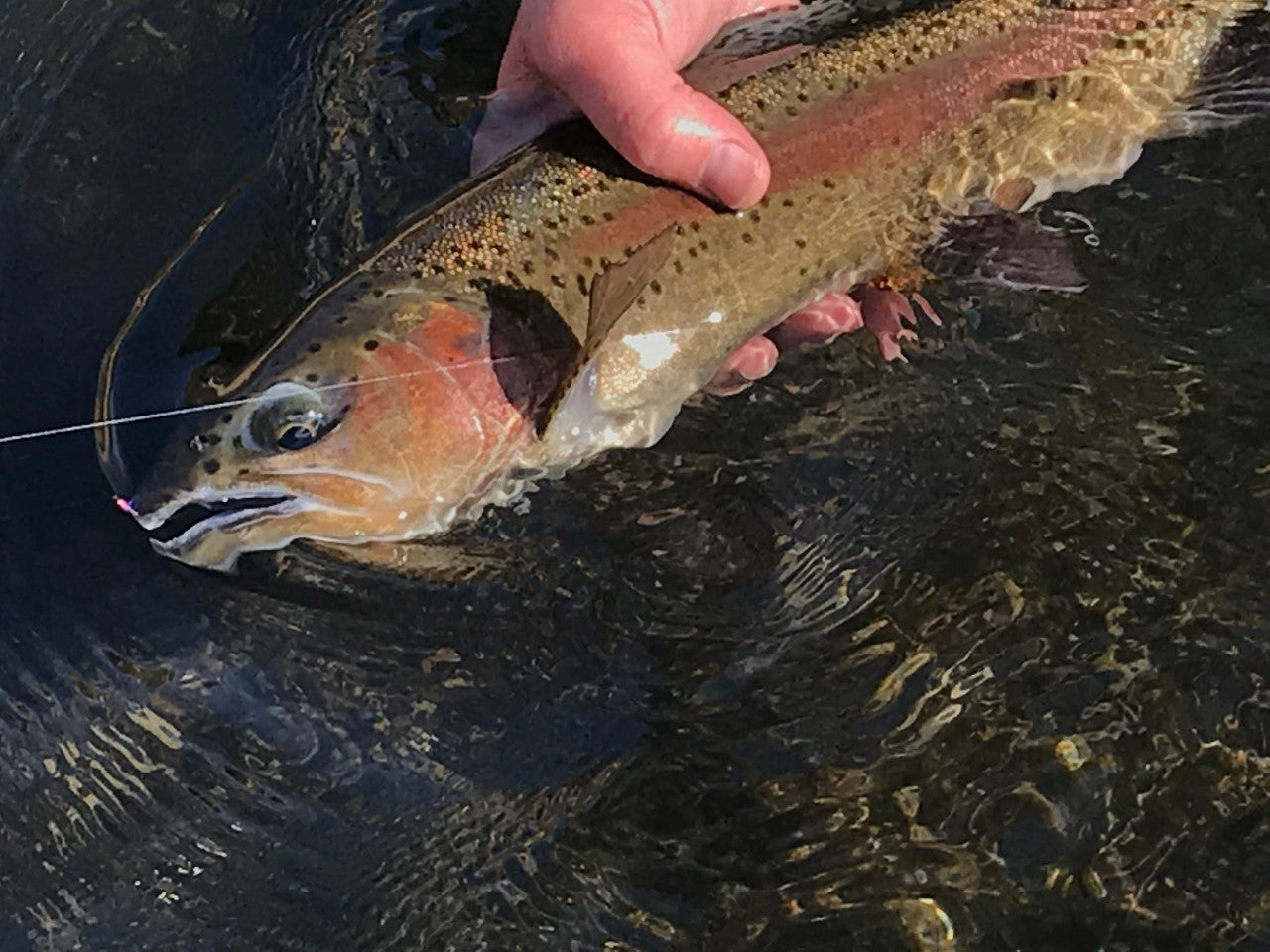WINDY WINDY WINDY

Break out your kites, your windsurfers, and your extra long tent stakes; we are in for a windy week! The ten-day forecast calls for windy day upon windy day, every single day through this weekend and next calls for winds 10-20 and some days stronger than that. Fortunately, down in the canyon there are places where the canyon walls break the wind and create areas that are far calmer than the rest of the river. Conversely, you could find yourself in a zone that happens to be the windiest zone on the river – Mack’s Canyon is one of those really windy places, as is Nena boat launch and the stretch of river just upstream of Beavertail. Those are the most consistently windy stretches that I can think if off the top of my head.
So, what’s a fly angler to do? The answer is, of course, go fishing! Wind and weather are part and parcel of fishing, and wind is nearly always a constant out here in the high desert. You just have to learn how to work with the wind. Most of the summer and fall the winds blow upstream on the Deschutes, and it is only during the spring and late fall that cold fronts roll through and cause the wind to blow hard downstream. What to do when you want to cast your fly upstream and the wind is blasting downstream? You have two options. You can become a better caster, one who can cast into the wind, OR you can find a place on the river where a back eddy causes the current to flow in a whirling circle. Since a large back eddy essentially makes the river flow in the opposite direction of its true course, finding a back eddy will allow you to cast with the wind while also casting “upstream” into the current.
Becoming a better caster is something that requires practice and dedication to the art. There are volumes written on casting as well as a gazillion YouTube videos out there (some great, others not so much), but the best thing you can do for yourself is to practice your casting when you are not on the river. Need a 15-minute break from work? Head outside with your fly rod, tie a piece of yarn to the end of a leader, and find a few targets at which to cast. These can be living things like your dogs, cats, or children, or you could flip over a few large garbage can lids and try to land the fly in the center of those. As you get better, try casting into Frisbees. Eventually, graduate to mayonnaise jar lids. Practice on windy days, practice casting into the wind, practice with the wind blowing into your casting side (you will have to make off-shoulder casts). Just practice. It will pay off in spades when you hit the river.
A windy day does not necessarily require a heavier rod weight, you can cast straight into the wind with a three weight if you change the angle that the rod travels. Without wind, our rod tip travels from ten o’clock to two o’clock on a straight line above our heads. This forms a nice airfoil/loop that stays aloft until the leader comes over the top and the line straightens out in mid air. When you cast into the wind and you continue to have your rod travel on the 10 to 2 line the airfoil is easily lifted/and or blocked by the wind. To fix this you need to tilt the angle of the false casting plane so that your rod tip travels from 9 to 12. This will force your tight loop down into and straight through the wind.


The hatches are pretty much the same as I wrote about last week. There have been some evenings with excellent caddis activity, brown caddis in sizes 12 and 14 work the best on the pods of slurping trout in the evenings (if you are lucky enough to find them). People are getting fish on dry-dropper set ups as well as indicator nymphing and tight-line nymphing. Tight-line nymphing (or Euro nymphing) is by far the most productive fishing style these days. If you are curious about this method, consider jumping into a Euro-nymphing one-day clinic. We have these clinics every other weekend, but they do require signing up in advance. We have one spot left for tomorrow’s class and one spot left in the April 24 clinic. Give us a call if you want to jump in on the last spot in either of these classes. We provide all of the gear for you to use/try/test drive. This is a great way to see what Euro-nymphing is all about. Our clinics are $250 per day.

I may be solo in the store tomorrow, which is going to be a complete nightmare. Please be patient – we are short-staffed and John headed off to the coast to do a fund-raiser for the Deschutes River Alliance. We have our feelers out looking for a summer employee, but have not put anyone in place yet. We are accepting resumes at shop@deschutesangler.com
We’ll see you on the river!!










